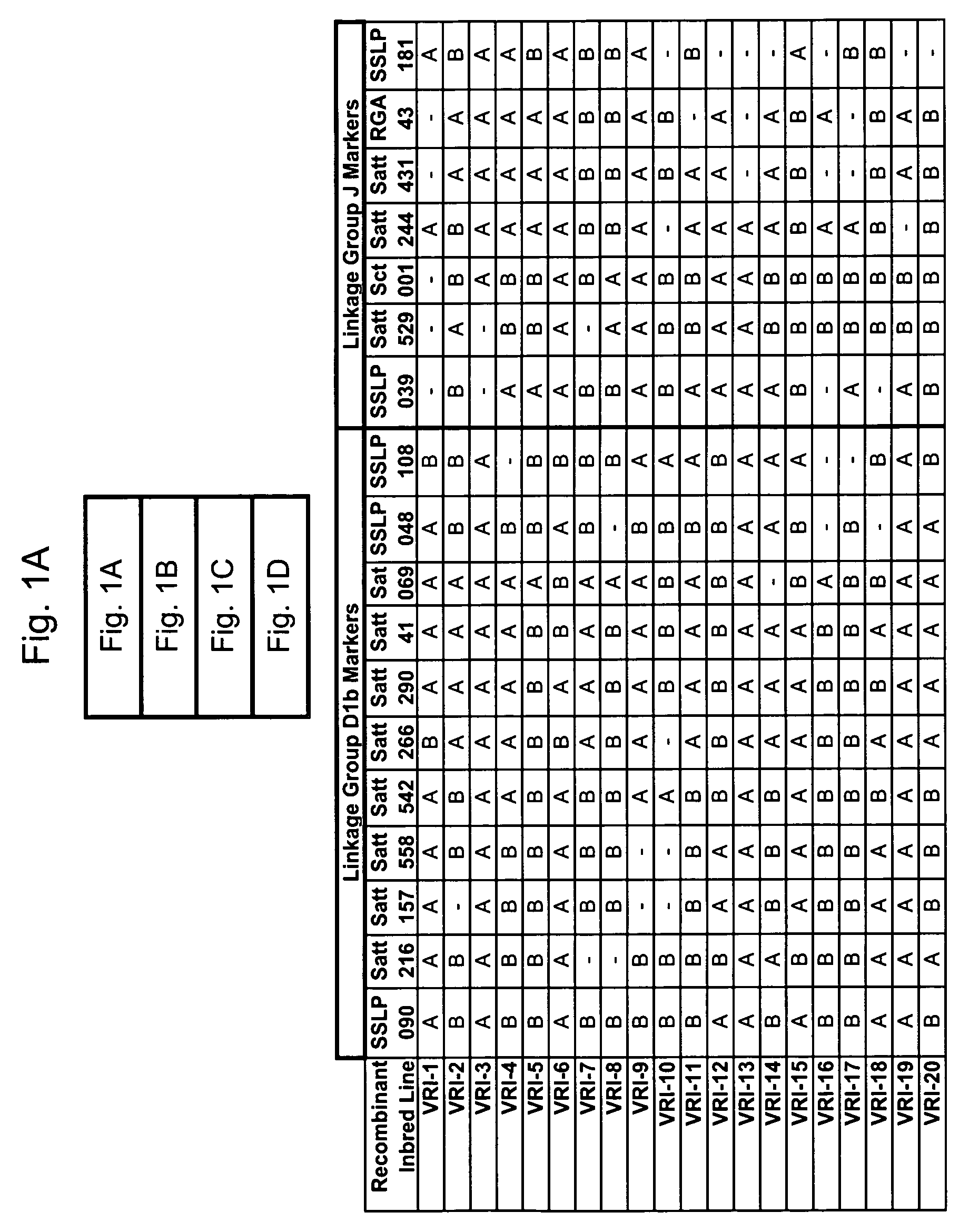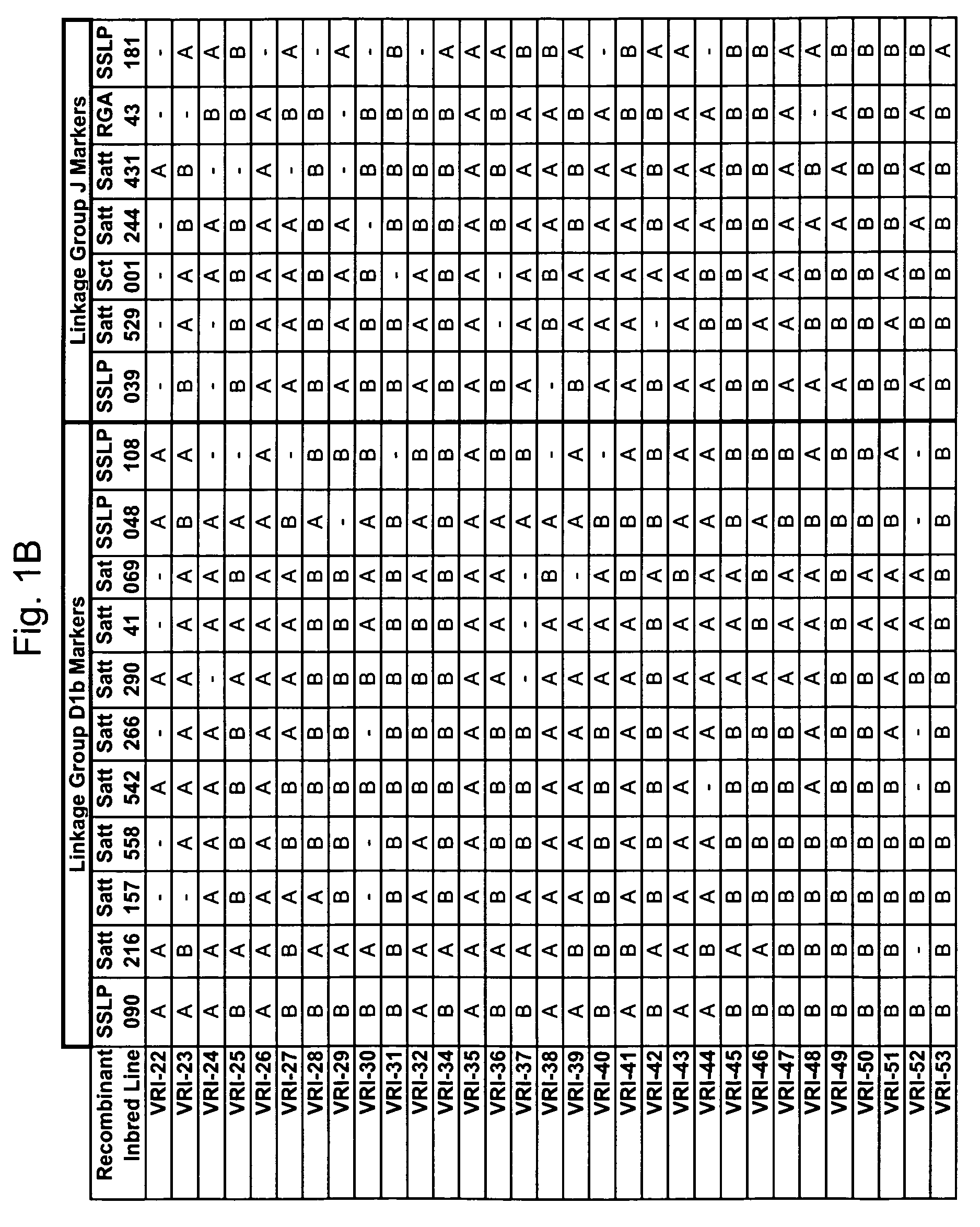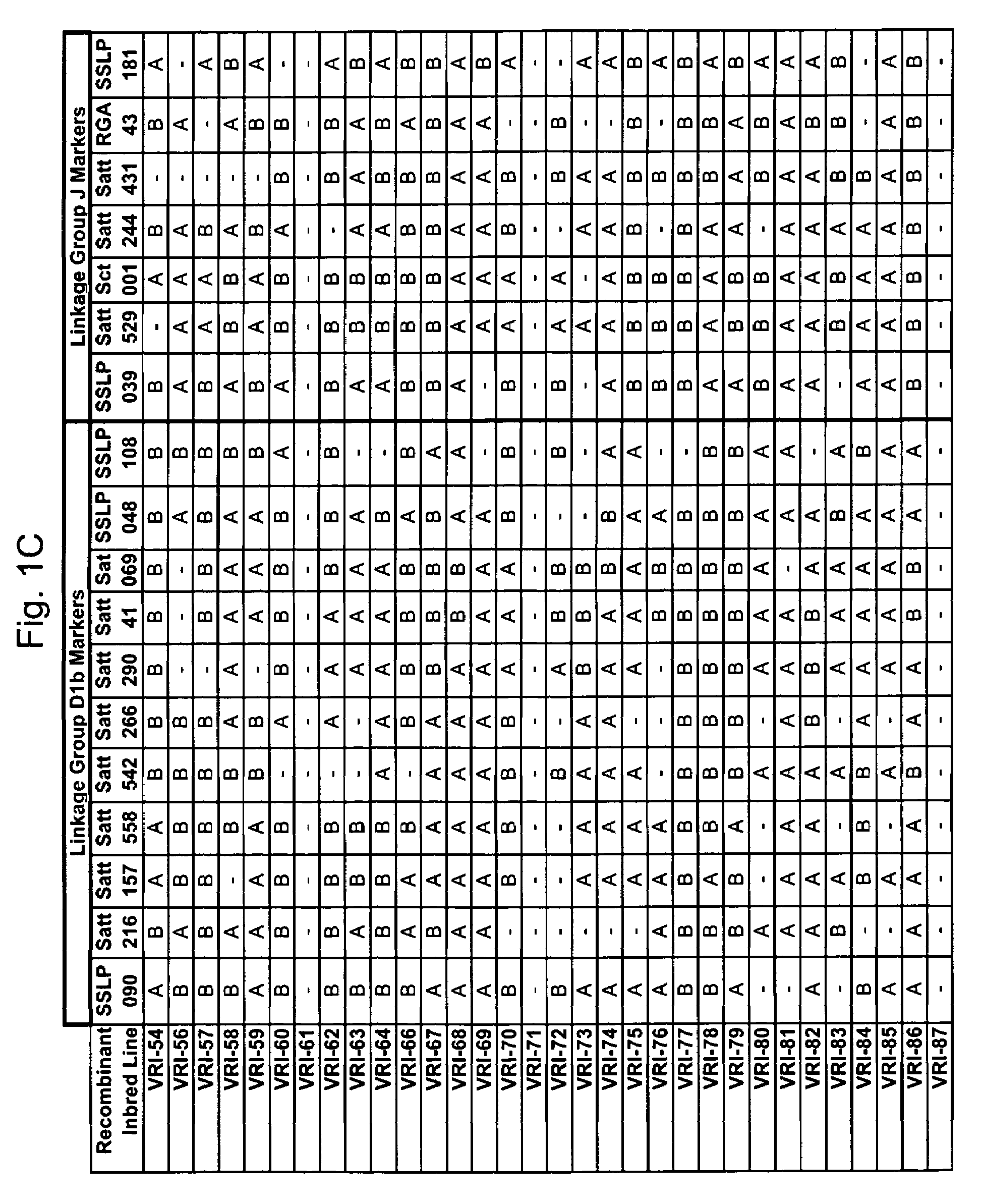Marker mapping and resistance gene associations in soybean
a technology of resistance gene and mapping, applied in the field of molecular genetic markers in soybean, can solve the problems of poor genetic resolution, all parts of the plant are susceptible to disease, and the rflp genetic analysis is hindered by technical considerations
- Summary
- Abstract
- Description
- Claims
- Application Information
AI Technical Summary
Benefits of technology
Problems solved by technology
Method used
Image
Examples
example 1
Generation of Soybean ESTs
[0269]A total of 71 soybean EST libraries were constructed using mRNA isolated from a variety of plant tissues, including developing seed, leaves, roots, stem, immature flower, and plant embryo. Some of the plants that were used to construct the EST libraries were challenged with various pathogens such as SCN, Sclerotinia (white mold) and severe stunt virus. The libraries were constructed using well-established procedures.
[0270]The 71 EST libraries collectively yielded approximately 194,000 EST sequences. These 194,000 EST sequences were BLASTed against known “disease-related” plant sequences (including known disease-resistance and disease-response genes induced or upregulated in response to infection) to identify approximately 25,00 EST sequences of interest. The EST sequences were queried against the nucleotide database of the National Center of Biotechnology Information (NCBI) using the BLAST search tool.
[0271]These 25,000 ESTs were examined for sequence...
example 2
Marker Diversity Analysis
[0275]The polymorphic nature of the EST sequences SSLP039 and SSLP090 were tested in a marker diversity analysis (also called an allelic ladder). Twelve representative soybean materials consisting of wild and cultivated plant introductions from diverse origins were used in the analysis (see Table 1 below).
[0276]
TABLE 1Soybean Lines Used for Diversity AnalysisLine NameSpeciesOriginMaturityTypeLee68*Glycine maxArkansasVIcultivarPekingGlycine maxChinaIVcultivarWilliams*Glycine maxIllinoisIIIcultivarWyeGlycine maxMarylandIVcultivarV71-370*Glycine maxVirginiaVcultivarPI96983*Glycine maxKoreaVcultivarplant introduction linePI245331Glycine sojaTaiwanXwildplant introduction linePI407162*Glycine sojaKoreaIVwildplant introduction linePHP1Glycine maxcultivarPHP2Glycine maxcultivarPHP3Glycine maxcultivarPHP4Glycine maxcultivar*Lines used to develop a mapping population.
[0277]The diverse strains included commercial cultivars, breeding lines and parental lines of mapping ...
example 3
SSLP EST Marker Primer Design
[0279]The nucleotide sequences of EST marker candidates SSLP039 and SSLP090 were queried against the public NCBI soybean EST database using the BLAST search tool. The search results were scanned for SSR and insertion / deletion mutations that may produce favorable polymorphism at that locus in different soybean genomes (lines).
[0280]The Primer Select feature of LASERGENE® Version 4.0.3 manufactured by DNASTAR® Inc. (Madison, Wis.) was used to design primers that amplify 150 to 300 base pair regions of the SSLP039 and SSLP090 sequences which were predicted to include potentially polymorphic regions. The forward and reverse primers used to amplify SSLP039 are provided in SEQ ID NOS: 3 and 4, respectively. The forward and reverse primers used to amplify SSLP090 are provided in SEQ ID NOS: 5 and 6, respectively. These primers used with the present invention are exemplary only, as other suitable primers are easily designed and generated.
PUM
 Login to View More
Login to View More Abstract
Description
Claims
Application Information
 Login to View More
Login to View More - R&D
- Intellectual Property
- Life Sciences
- Materials
- Tech Scout
- Unparalleled Data Quality
- Higher Quality Content
- 60% Fewer Hallucinations
Browse by: Latest US Patents, China's latest patents, Technical Efficacy Thesaurus, Application Domain, Technology Topic, Popular Technical Reports.
© 2025 PatSnap. All rights reserved.Legal|Privacy policy|Modern Slavery Act Transparency Statement|Sitemap|About US| Contact US: help@patsnap.com



